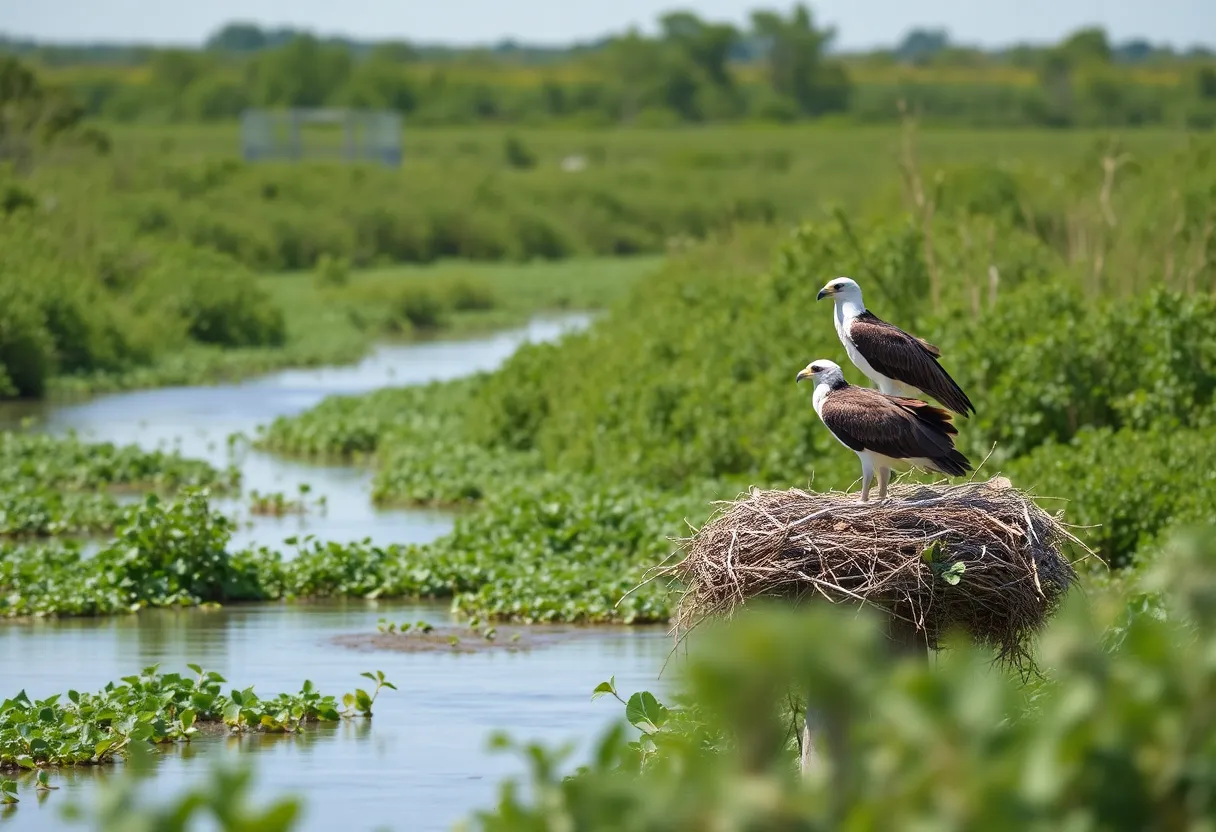News Summary
The osprey population in Virginia is facing a troubling decline due to a significant decrease in menhaden, a key food source. Current breeding levels are reported to be dangerously low, raising concerns among researchers. Additionally, new threats to nesting success, such as predation by minks, further exacerbate the challenges these birds face. Conservation efforts are needed to address both food shortages and predatory risks.
Virginia Ospreys Face Decline Due to Menhaden Shortage and New Nesting Threats
Gloucester Point, Virginia
Recent observations indicate a troubling decline in the osprey population in Virginia, primarily linked to a significant decrease in their key food source, menhaden, as well as emerging threats to nesting success. Bryan Watts, a research professor and director of the Center for Conservation Biology at The College of William & Mary, reported a failed osprey nest on the Lower York River. This nest, once a breeding ground for ospreys, was abandoned this year and taken over by diving terns, a phenomenon that Watts has noted in several instances over the past few years.
Although ospreys were once considered a conservation success story, rebounding after the ban on the pesticide DDT in 1972, their current breeding levels in Chesapeake Bay have plummeted. Ospreys typically require an average of 1.15 chicks fledged each year to maintain a stable population; however, current breeding levels in the region are reported to be less than half that number, with some areas showing chick production at under one-tenth of the necessary level. The primary culprit for this decline appears to be the dwindling menhaden population, which are essential for the nutritional needs of young ospreys.
Menhaden play a critical role in the ecosystem, providing valuable sustenance for the local wildlife, including ospreys. The fish have been consistently harvested by U.S. fishermen since 1951, with annual catches reaching at least 1.1 billion pounds primarily for fish oil, fish meal, and bait. This extensive fishing practice has raised concerns among environmental groups and researchers like Watts, who argue there is a direct correlation between the decline in menhaden and the declining osprey chick success rates. However, fishing companies assert that the reduction in osprey populations may not solely be attributed to menhaden depletion, suggesting that factors such as climate change and pollution may also play significant roles.
In response to concerns surrounding the decline of the osprey population, the Atlantic States Marine Fisheries Commission has established a workgroup to explore menhaden management strategies that could address these issues. Chris Moore from the Chesapeake Bay Foundation has expressed that without implementing significant changes, ospreys could face even greater population decreases in the years ahead.
Adding to the challenges faced by ospreys, a new threat has emerged. Recent footage captured by a camera installed on an osprey platform in Virginia Beach revealed a mink raiding a nest, marking a potential new danger to the survival of osprey chicks. This incident points to increasing concerns about predation that could further disrupt the nesting success of ospreys in the region.
Previous studies indicate that successful osprey nesting reached its peak in 2019, with 102 nests recorded in the Lynnhaven River. However, nesting success has notably declined since that time, raising alarms among researchers including Reese Lukei Jr. and Keriann Pfleger. They are currently investigating how predatory birds and potential threats like minks are impacting the ability of ospreys to successfully rear their young.
To enhance protection for osprey nests against various predators, recommendations are expected to be made, which may include measures such as installing stove pipes on nest poles to deter climbing animals like minks. As the issues surrounding osprey populations evolve, both conservationists and industry stakeholders recognize the importance of collaborative efforts to address the challenges these birds face and to mitigate the risks posed by both declining food sources and increased predation.
Deeper Dive: News & Info About This Topic
HERE Resources
Declining Osprey Populations in Virginia’s Chesapeake Bay
Additional Resources
- Los Angeles Times: Osprey Chicks are Dying in Nests
- Wikipedia: Osprey
- MSN: Ospreys Came Back from the Brink
- Google Search: Osprey Population Decline
- Tribune-Democrat: Ospreys Face New Challenges
- Google Scholar: Osprey Nesting Success
- Chesapeake Bay Magazine: Osprey Research
- Encyclopedia Britannica: Menhaden

Author: STAFF HERE VIRGINIA BEACH WRITER
The VIRGINIA BEACH STAFF WRITER represents the seasoned team at HEREVirginiaBeach.com, your trusted source for actionable local news and information in Virginia Beach, Virginia Beach City, and beyond, delivering "news you can use" with comprehensive coverage of product reviews for personal and business needs, local business directories, politics, real estate trends, neighborhood insights, and state news impacting the region—supported by years of expert reporting and strong community input, including local press releases and business updates, while offering top reporting on high-profile events like the Virginia Beach Neptune Festival, East Coast Surfing Championship, and military homecoming celebrations, alongside key organizations such as the Virginia Aquarium, Virginia Beach Convention Center, and Oceana Naval Air Station, plus leading businesses in tourism and defense like Busch Gardens and Northrop Grumman, and as part of the broader HERE network including HEREWilliamsburg.com, providing credible, in-depth insights into Virginia's vibrant landscape. HERE Virginia Beach HERE Williamsburg





